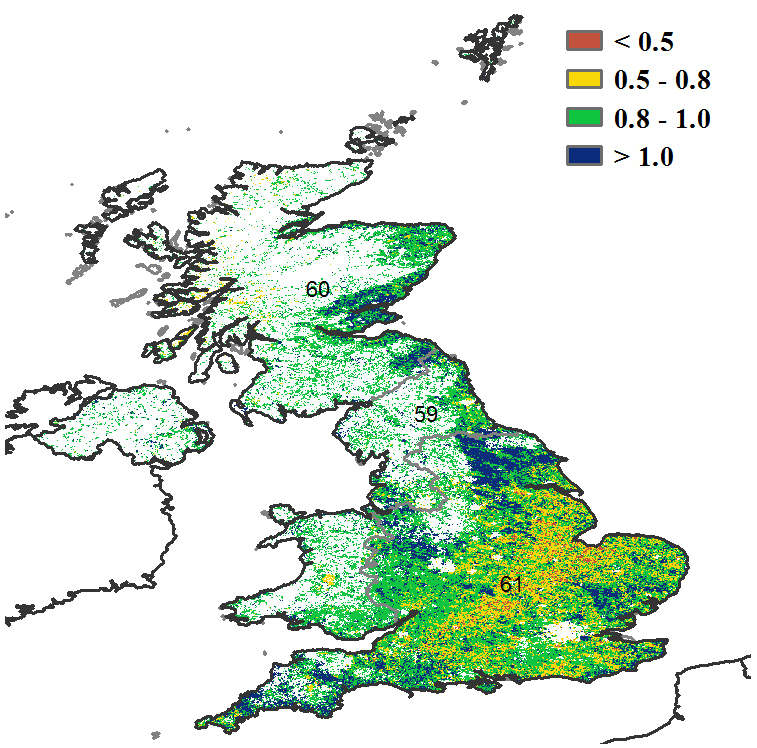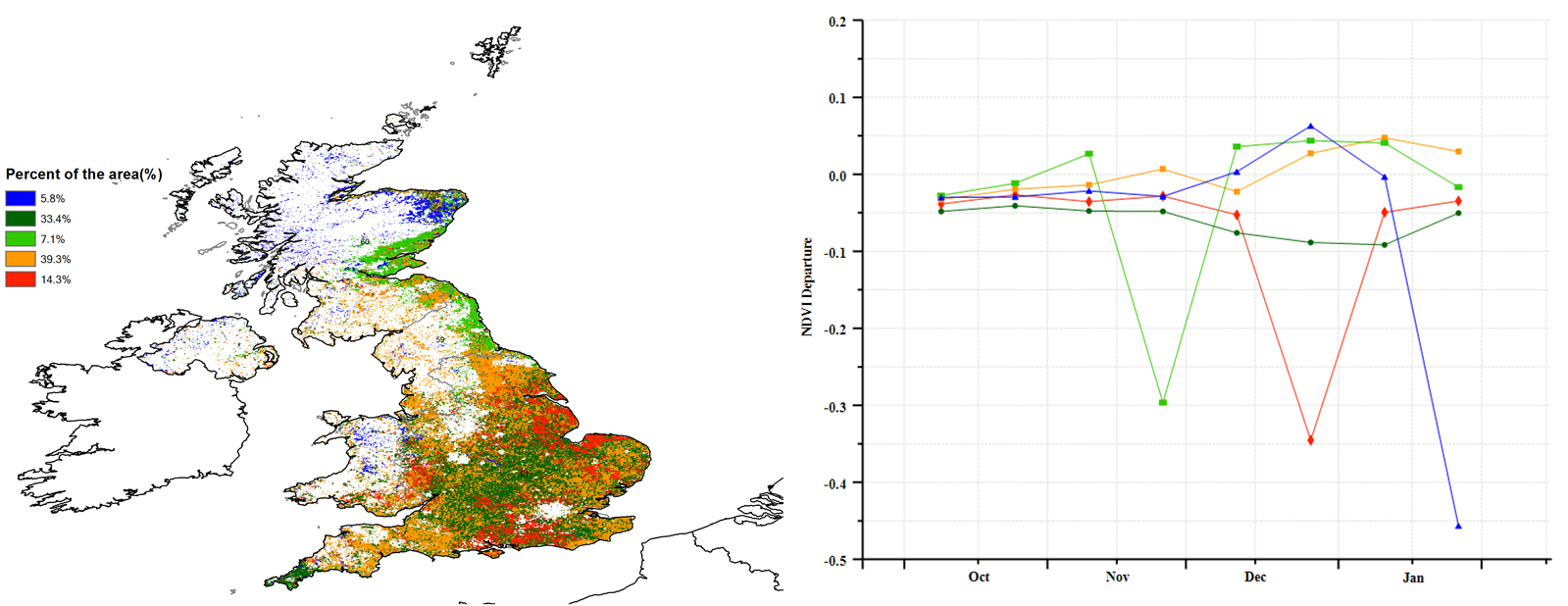
Bulletin
wall bulletinMenu
- Overview
- Country analysis
- Argentina
- Australia
- Bangladesh
- Brazil
- Canada
- Germany
- Egypt
- Ethiopia
- France
- United Kingdom
- Indonesia
- India
- Iran
- Kazakhstan
- Cambodia
- Mexico
- Myanmar
- Nigeria
- Pakistan
- Philippines
- Poland
- Romania
- Russia
- Thailand
- Turkey
- Ukraine
- United States
- Uzbekistan
- Vietnam
- South Africa
- Afghanistan
- Belarus
- Mongolia
- Sri Lanka
- Zambia
- Mozambique
- Kenya
- Angola
- Hungary
- Italy
- Morocco
- UK
Authors: 超级管理员 | Edit: Miao
Summer crops have been harvested and winter crops (winter wheat, winter barley, and rapeseed) have been planted during the current reporting period. According to crop condition graph, NDVI values were below average from October to the end of December. Agro-climatic indicators show that rainfall and temperature for the country were below average (RAIN, -13%, TEMP, -1.4°C) and radiation and biomass were slightly above average (RADPAR, +3%, BIOMSS, +1%). The NDVI departure cluster profiles indicate below average values in 47.7% of arable land including East Midlands (Lincolinshire), East Angelia (Northampton,Bedford, Cambridge, Huntingdon and northern of Norfolk), Southwest (Cornwall),West (Oxford, Wilt), and South (Berk) and slightly above average values in 46.4% Yorkshire and South west ( Somerset, Dorset) from November to January. The national average VCIx was good at 0.91, and the cropped arable land fraction slightly decreased by 0.4% compared to its five-year average.
Regional analysis
Based on cropping systems, climatic zones, and topographic conditions, three sub-national regions (Agro-ecological zones, AEZ) can be distinguished: the Northern barley region, the Central sparse crop region and the Southern mixed wheat and barley region. In comparison to the average of the recent 5 years average, the fraction of cropped arable land (CALF) remained unchanged in the Central and Southern AEZs but slightly increased (+1%) in the Northern Barley region.
The central sparse crop region is one of the country's major agricultural regions in terms production. Agro-climatic conditions include below average rainfall (RAIN -11%); temperature and radiation were slightly below average (TEMP -1.3°C, RADPAR, 1%). NDVI values were below the five-year maximum - according to the region's crop condition development graph – from October to late December, and above in January. At 0.95, VCIx indicates satisfactory crops.
In the main barley region NDVI was above average according to the crop condition graphs. Compared to average, rainfall and temperature were below average (RAIN -16%, TEMP -1.5°C). Against the recent 5YA, biomass was above average (BIOMSS, +3%). Sunshine was average. VCIx reached 0.95.
In the southern mixed wheat and barley zone, crop condition was below average according to the NDVI graph for the period. Rainfall, temperature and biomass were below average (RAIN -12%, TEMP -1.3°C, BIOMSS -1%) but sunshine was relatively high (RADPAR +5.7%). The region had favorable VCIx (0.89), although the value is lower than in the other AEZs.

(a). Phenology of major crops


(b) Crop condition development graph based on NDVI (c) Maximum VCI

(d) Spatial NDVI patterns compared to 5YA (e) NDVI profiles


(f) Crop condition development graph based on NDVI (Sparse crop area of N England, Wales and N. Ireland (left) and Barley area in Scotland (right))

(g) Crop condition development graph based on NDVI (South mixed wheat and Barley zone)
Table 3.37. United Kingdom’s agroclimatic indicators by sub-national regions, current season's values and departure from 15YA, October 2018 - January 2019
| Regions Name | RAIN | TEMP | RADPAR | |||
| Current (mm) | Departure from 15YA (%) | Current (°C) | Departure from 15YA (°C) | Current (MJ/m2) | Departure from 15YA (%) | |
| Northern Barley area (UK) | 518 | -16 | 5.6 | -1.5 | 129 | 0.0 |
| Southern mixed wheat and Barley zone (UK) | 319 | -12 | 7.8 | -1.3 | 208 | 5.7 |
| Central sparse crop area (UK) | 466 | -11 | 7.1 | -1.3 | 164 | -0.6 |
Table 3.38. United Kingdom’s agronomic indicators by sub-national regions, current season's values and departure from 5YA, October 2018 - January 2019
| Regions Name | BIOMSS | Cropped arable land fraction | Maximum VCI | ||
| Current (gDM/m2) | Departure from 5YA (%) | Current | Departure from 5YA (%) | Current | |
| Northern Barley area (UK) | 1033 | 2 | 100 | 1 | 0.95 |
| Southern mixed wheat and Barley zone (UK) | 1150 | -1 | 100 | 0 | 0.89 |
| Central sparse crop area (UK) | 1147 | 3 | 100 | 0 | 0.95 |
